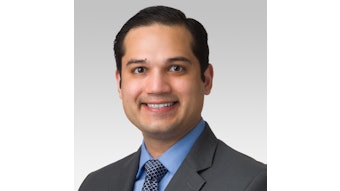Dermatologists top the list in antibiotic prescriptions
Sulzberger Memorial Lecture encourages a more consequential approach.

Dermatologists know that overprescribing antibiotics is a problem. What some may not know is that on an individual basis, dermatologists prescribe more antibiotics than any other practitioners in any other specialty.
“There are fewer dermatologists than many other types of physicians, and efforts focusing on limiting antibiotic use have tended to focus on numerically larger groups such as primary care, emergency providers, and pediatricians,” said David J. Margolis, MD, PhD, FAAD, Gerald R. Lazarus professor of dermatology and senior scholar at the Center for Clinical Epidemiology and Biostatistics at the University of Pennsylvania Perelman School of Medicine in Philadelphia. “Other groups are larger, and from a public health point of view are crucial for decreasing unneeded antibiotic use. But dermatologists — we are the number one prescribers.”
Is it good for the long haul?
Dr. Margolis discussed the latest findings on antibiotic use and overuse in dermatology during the Annual Meeting's Marion B. Sulzberger, MD, Memorial Award and Lectureship, “Pharmacotherapy: Antibiotic Use in Dermatology.” Dermatologists should not stop prescribing antibiotics when appropriate, he said, but they should consider the necessity of their use, the potential clinical consequences of long-term antibiotic use, and the potential for switching to other, non-antibiotic agents.
“Dermatologists frequently use agents like doxycycline and minocycline, not just for their antimicrobial properties but also as anti-inflammatories,” Dr. Margolis explained. “And where most clinicians prescribe antibiotics for three to 14 days, depending on the organism and the seriousness of the infection, dermatologists often prescribe medications like doxycycline for acne for months and sometimes for years.”
On the population level, long-term use of antibiotics raises concerns about resistance and the rise of what the popular press likes to call “super bugs,” he said. Hospitals, health systems, and academic centers have devoted significant resources to antibiotic stewardship to slow local development of resistance by limiting the use of antibiotics.
Brewing side effects
There are also concerns at the patient level about potential side effects of long-term antibiotic use, including an increased risk for certain types of cancer, lupus and other immunomodulated diseases, diarrhea, nausea, and more. Antibiotics can also give rise to severe cutaneous adverse events like DRESS (drug reaction with eosinophilia and systemic symptoms), resulting in hepatitis, nephritis, interstitial pneumonia, myocarditis, and other potentially life-threatening hypersensitivity reactions.
Other options available
There is at least one potential alternative to antibiotic treatment for acne in women — spironolactone. Originally developed as a diuretic, spironolactone modulates androgen production to reduce sebum overproduction, which can improve the clinical manifestations of acne.
“Spironolactone isn’t a very good diuretic, but its anti-androgen side effects can be quite effective in treating women who develop acne,” Dr. Margolis said. “It has become increasingly popular, although there aren’t many clinical trials that demonstrate how well spironolactone works or how effective it might be compared to antibiotics.”
Dr. Margolis is co-principal investigator on a head-to-head comparison of spironolactone 100 mg/day versus doxycycline 100 mg/day, the most common regimen for both agents. The trial launched in March 2022 and should be complete the summer of 2026.
“The goal today is to help dermatologists be more thoughtful about antibiotic use,” he said. “It’s not a matter of what dermatologists should or shouldn’t do, it’s about being thoughtful and considering the potential consequences of prescribing antibiotics as well as alternatives.”
Visit AAD DermWorld Meeting News Central for more articles.











